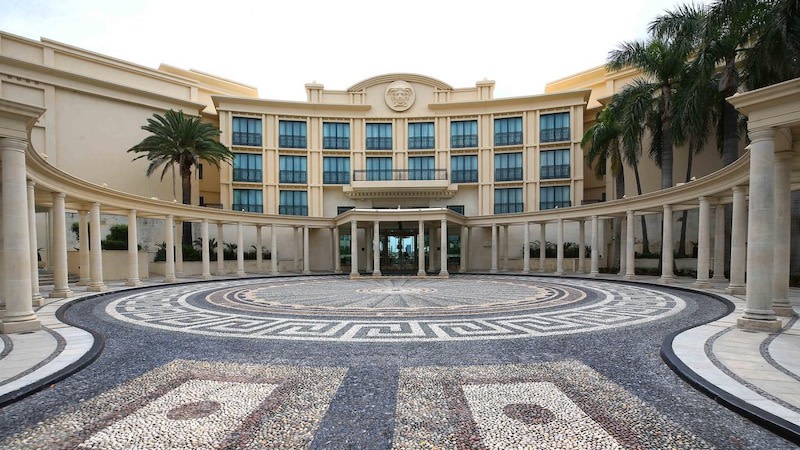
Hotel room rates in Darwin and Brisbane have soared 46 per cent across the first seven months of 2022, according to Colliers and STR Global.
Colliers used STR Global data to create its Australian Hotels Investment Market Report, which sets out the average room rate increase over January to June 2022 compared to the same period in 2019.
STR Global collects monthly data on occupancy, revenue and pricing.
From January to June 2022, Darwin had the highest rate increase—42 per cent. Brisbane was next with 36 per cent followed by Cairns with an increase of 32 per cent.
However, when Colliers calculated the average room rate increase from January to July 2022 and included the July school holidays period, Brisbane pulled ahead of Darwin with an average room rate increase of 46.8 per cent.
Across the seven months compared to the same period in 2019, Darwin’s room rates had increased by 46.2 per cent and Cairns room rates increasing by 39.3 per cent.
Colliers hotel transaction services Asia Pacific national director Karen Wales said the rate increase in Darwin was likely due to the domestic travel market.
“It’s this boom in domestic leisure travel that we are seeing post-Covid,” Wales said.
“In January,we still had Omicron and its impacts, and we had lockdowns in a lot of states—WA only opened up much later in March. There had not been a lot of travel beforethe states opened up in January.
“Domestic leisure travel has really surged during the past five to six months, particularly during the April school holidays, partly as a function of people being nervous to go overseas or not having the availability to do so, but still having a desire to travel.”
Hotel room rate increases across Australian cities
| City | YTD June 2022 | Growth compared, January to June 2019 | YTD July 2022 | Growth compared, January to July 2019 |
| Darwin | $199.4 | 42.0% | $217.8 | 46.2% |
| Brisbane Centre | $209.6 | 35.9% | $230.6 | 46.8% |
| Cairns | $192.5 | 32.2% | $206.0 | 39.3% |
| Gold Coast | $257.9 | 31.6% | $258.6 | 32.3% |
| Adelaide Centre | $185.0 | 22.3% | $184.5 | 23.6% |
| Perth Centre | $197.7 | 21.0% | $200.0 | 18.7% |
| Canberra | $195.7 | 17.1% | $200.3 | 18.5% |
| Hobart | $209.1 | 11.1% | $207.3 | 13.1% |
| Melbourne Centre | $228.3 | 10.8% | $230.6 | 13.3% |
| Sydney Centre | $270.4 | 8.3% | $271.6 | 10.7% |
Source: STR Global and Colliers Australian Hotel Investment Market, H1 2022
Overall, prices remained the highest in Sydney and the Gold Coast with average room rates of $270.4 and $257.9 respectively over the January to June 2022 period, and $271.6 and $258.6 when the monthly data for July was factored in.
Wales said more people were paying a bit more for their accommodation and that this was tied to who had wealth as well as the higher quality of newer stock available.
“We are seeing corporate travel return but it is really domestic leisure that is driving the demand,” Wales said.
“It’s people going up a scale in accommodation, so the upper end of the market is probably doing better than the budget end.
“There is still a fair amount of wealth around and people are looking for experiences, destinations and products to enjoy—that is reflected in the rates as well.
“There is a lot of new accommodation stock coming online and people are willing to pay a bit more for something more experiential.”
The report also shows that during the period, 48 per cent of all hotel sales were by Chinese owners, signalling a big move by Chinese companies to divest Australian assets.
These include Bright Ruby selling the Hilton Sydney and the trend is set to continue with Chinese-owned assets going to market in the second half of this year, including Palazzo Versace on the Gold Coast and Lindeman Island in the Whitsundays.
However, there was also investment interest in the sector from overseas—57 per cent of capital came from outside Australia during the first half of 2022.

Wales said this spoke to hotels’ abiliity to react faster to economic changes.
“Hotels offer a unique proposition in this inflationary environment with an immediacy of income as rising costs can be passed on with dynamic pricing models that do not need to wait for contract terms to be reset,” Wales said.
This is also helped by more people wanting to spend on experiences and to travel domestically to regional Australia and resorts, which, Wales said, would help Australian hotels and their owners.
“We see little evidence in the past 12 to 18 months of pricing declining. The opening up of international travel on top of a strong recovery of the domestic base will help increase investors’ confidence,” Wales said.
“The predominance of domestic leisure travel, rather than corporate contracted rates, and a greater reliance on technology is also resulting in a nimbleness Australian hotels—and indeed their owners—have long pursued.”
In the first half of 2022 there was $1.15 billion in deal flow in the hotel market. Colliers predicts total annual transactions will hit $2.4 billion for 2022.